 Refinery Margins Soften and Focus Shifting from Gasoline to Distillate
Refinery Margins Soften and Focus Shifting from Gasoline to Distillate
Oil prices have moved lower in their current trading range on bearish news, but they will increase as the global stock surplus falls significantly in 2H16 and 2017. Refinery margins have softened and may prompt some trimming of discretionary runs, especially this autumn. Product stock levels are high with gasoline inventory coverage relative to local/export demand near the top of the historical band. Middle distillate stocks are well above their historical range, but rising seasonal demand will tighten inventory in terms of days of supply forward coverage. Product markets are getting an early start on the seasonal price shift from gasoline toward distillate, with gasoline cracks starting their seasonal decline earlier than normal. Diesel cracks will gradually recover and take the lead from gasoline.
Regional Prices Muted in Spite of Hot Weather
A stout national cooling degree-day (CDD) count (more than 10% higher year-on-year) has spurred an expansive role for gas in electric dispatch this month, enabling further recovery in cash prices. To be sure, widespread heat and a host of supply-side maintenance issues culminated in setting the ~$2.80/MMBtu month-to-date price for Henry Hub (HH) deliveries. Yet, despite the one-two punch of weather-aided demand and production disruptions, only a few regional price points managed to outpace the benchmark, with the vast majority significantly underperforming. Generally, during July regional prices have displayed similar discounts recorded last month.
More Troubles for French Nuclear
After a number of strikes hitting output during June (- 3 GW year-on-year), French nuclear output has further deteriorated in July, hitting a low since at least 2012 and leading to a sharp contraction in French net exports and higher utilization of French gas units. The detection of an anomaly in the steam generators channel head is also contributing to undermine availability and will continue to do so in the upcoming months, as outages are likely being extended. In a PWR reactor design as for the EDF units, the replacement of the steam generator channel head can be done during a planned outage, typically lasting from one to three months, whereas a typical shutdown for refueling, which is carried out once a year, takes only 35 days. For the time being, for the units that are not offline and are being affected by this specific anomaly, a temporary solution is likely to be a steadier operation of the plants.
PRB Coal Expected to Firm
Stronger weather-driven power demands and an upward shift in natural gas forwards has boosted our coal burn expectations. This is offset in 2016 by increased coal production levels in the quarter just ended. In 2017, however, we are projecting growing tightness in the PRB, as a call on incremental coal supply may be challenging to meet.
LPG Freight Rates Plumb Cycle Lows
Spot VLGC freight rates have plunged to new cycle lows below $24/MT on the benchmark Ras Tanura to Chiba, Japan, route. Freight rates on these vessels are now trading well below breakeven economics for even the most efficient operators. Rates look to continue to suffer for the foreseeable future as the trinity of peaking LPG trade, rising tonnage, and the expanded Panama Canal plagues these freight markets.
U.S. Ethanol Prices Decline
Manufacturing margins decrease the week ending July 15. RIN prices slide after peaking Monday.
S&P 500 Pushes Higher
The S&P 500 continued to push to new highs. Again, volatility declined and high yield debt prices rose. Emerging market debt prices, however, pulled back after having posted strong gains in the previous weeks. The dollar was generally stronger. The Turkish lira was noticeably weaker in the wake of the failed military coup. Commodities were mostly lower, both total, energy and ex-energy.
Near-Term Libyan Supply Growth Possible, But Likely Not Sustainable
The situation in Libya shows no real improvement despite the recent swell of optimism over a near-term ramp in Libyan crude production. On July 7, Ibrahim Jathran, commander of the central Petroleum Facility Guards (PFG), announced exports would resume from the long-shuttered Es Sider and Ras Lanuf terminals within a week. The military push to clear ISIS out of the region near Sirte has also been making territorial gains. However, the announced merger of the two rival NOC’s seems to have broken down. PIRA acknowledges the possibility that terminals may reopen shortly. But in our view, the chaotic political and security situation could derail any production gains just as quickly. The UN-backed unity government (the GNA) has been unable to exert control, stark divisions remain between the rival governments and their affiliated militaries, and the myriad of militias on the ground will act in their own interests.
Rules Stayed, Case Remains in 5th Circuit: Positives for ERCOT Coal
The 5th Circuit Court has decided that they (as opposed to the more EPA-friendly DC Circuit) are the appropriate venue to decide legal challenges to EPA’s TX Haze FIP that would have required costly scrubbers on 14 coal units. They also stayed implementation of the rule, offering a good preliminary sense that the Court has issues with EPA’s arguments and approach — as PIRA has been highlighting. This decision comes on the heels of EPA’s final One-Hour SO2 designations, where EPA declined to take action on four areas where Texas coal plants were proposed to be in Nonattainment, offering an environmental reprieve for coal/lignite units in Texas and pushing off any near to mid-term expectations of EPA-induced retirements.
Asia Embraces Diversification with Rising Crude Imports
Oil market rebalancing continues, but initial onshore stock decline has been less visible. India’s oil demand remains strong but with growth easing in 2H16 due to a heavy monsoon season and moderating economic growth. China’s net exports of gasoil, jet fuel and gasoline is set to increase by some 25% from last year. Asia embraces crude supply diversification with rising crude imports, but the share of Middle Eastern crude imports in the region is expected to remain high as Middle Eastern countries will strive to maintain market share. Asia-Pacific net crude imports are expected to rise in 4Q16 and 2017. Asian refinery margins are expected to stay modest due to high product inventories.
NBP Encourages a Flood of Gas in 1Q (Not Including LNG)
The strong move upwards in 1Q17 pricing is not just a story of NBP overreaching to the upside, but is a story of how the Continent is not. Spreads in the first quarter of next year have widened by over €1/MWh — meaning, the Continent is showing confidence that the U.K.’s tightness is a local story not a Continent-wide one. PIRA believes that this confidence is well-founded and will eventually lead to a significant move downward in winter pricing.
Coal Pricing Takes a Step Back after Extended Rally
The coal market moved lower last week, on the back of weaker oil and gas prices and perhaps a hangover from the sizeable rally observed in the prior few weeks. The decline in pricing was particularly acute in the Atlantic Basin, while FOB Newcastle’s (Australia) price declines were more muted. With China’s import demand showing signs of strength, exacerbated by wet weather impeding production in some key areas, it is not surprising that FOB Newcastle prices have held up relative to API#2 and API#4. The weather-related disruption to China’s production (on top of the drive to rein in overcapacity) skews the risk to the upside for FOB Newcastle over the next 90 days.
Global Equities Again Move Higher
Global equities moved higher on the week, with gains concentrated in the Americas, of which the U.S. and Brazil performed the best. In the U.S., the strongest sectors were retail and technology, while energy was the worst performer. Internationally, Latin America did the best, while China and BRICs also outperformed.
U.S. Ethanol Production Soars to New Record
U.S. ethanol production jumps to an all-time high of 1,029 MB/D for the week ending July 15, breaking the previous record of 1,008 MB/D set last November. Inventories were slightly higher.
Latin American Product Demand Improving but Still Down Year-on-Year
Latin American product demand is improving but is still down year-on-year. Consumption of the four main refined products trends higher in 2H16 but lag 2015 levels. PIRA forecasts that 3Q16 gasoline demand will be lower year-on-year but higher vs. 2Q16. Diesel demand in 3Q16 is expected to be below 3Q15 but higher than 2Q16. Regional refinery crude runs still disappoint with 3Q16 by ~70 MB/D lower than a year ago.
Tighter LNG Balances Are Not Sustainable into 2017
The tighter balances that have fueled price support in Asian and European spot markets are simply not sustainable. The less ramp-up that occurs in 2016, the more ramp will occur in 2017. The possibility of Asian supply reaching the Atlantic Basin in the year to come cannot be dismissed, particularly if Nigerian and Angolan production continue to run into operational problems. Length in Asia balances will easily front run any tightness in the Atlantic Basin. It will be more apparent when Qatari volumes begin to shift west.
Emerging Markets Are Stronger; Developed Markets Are Resilient
Economic data out of the emerging world have turned stronger of late. Encouraging signals include: trade volumes turning positive on a year-on-year-basis; widespread improvements in industrial sector output; solid readings for vehicle sales; and constructive financial sector sentiments. In Europe, a preliminary July business confidence reading suggested that the Brexit decision has not yet disrupted economic activity. Next week’s economic calendar is filled with significant events.
End of Term GHG Policy Push in U.S.
The U.S. GHG Inventory shows 2014 emissions up year-on-year but down 7% vs. 2005. It does contain large write-ups to historic methane emissions from oil and gas production and landfills. Methane regulations for oil/gas and landfill sectors have been finalized, a draft technical report for the auto CAFE review has been published, and an endangerment finding for aviation and an international agreement on HFCs are expected later this year. The U.S., Canada and Mexico set a challenging regional goal of generating 50% of electricity from non-emitting resources by 2025. 2016 elections will impact the survival of the Clean Power Plan and the arc of climate policy for the next four years. PIRA revised our long-term federal carbon prices/costs expectations given the CPP stay.
U.S. Stock Build Moderates But Still a Build
Product demand strongly rebounded this past week, narrowing the product stock build, while crude stocks fell less than expected despite very high crude runs as imports stayed elevated. Light product imports were very high and these should substantially decline in next week’s data. Cushing crude stocks were up slightly and month to date are roughly flat and near our forecast. Another small build is expected next week. PIRA is forecasting continued strong light product demand for next week, which should cause major light product stocks to show a slight draw. Crude stocks decline sharply next week as runs stay high and imports back off.
The Implications of Autonomous Vehicles for Fuel Demand
PIRA does not expect autonomous vehicles (AVs) to have a meaningful impact on the oil, electricity demand or emissions outlooks over the next 20 years. Fully autonomous vehicles, which would allow the driver the flexibility to pursue other activities, are still likely at least a decade or more away from a technology standpoint. If and when this technology arrives, its impact on gasoline demand is not clear cut. If there is a synergy between AVs and electric vehicles (EVs) it could accelerate electrification of the fleet, for both cars and some trucks. It may also improve the fuel efficiency of the operation of vehicles. However, the impact on miles driven could very well be positive, particularly if there is substitution for some portion of train, plane or public transport travel.
Ghana Gas Prices Are Some of the Highest in the World
Commercial gas production from the Jubilee field, which is processed at the Ghana National Gas Company’s gas processing plant at Atuabo raised the prospects of a price war in the supply of gas for power generation when it debuted on the market last year. However, the Atuabo gas is now one of the priciest in the world — even more expensive than its regional competitor from Nigeria, the West Africa Gas Pipeline Company (WAGP). This year it is estimated that the Atuabo gas price will remain uniform but that of the average annual delivery price of WAGP gas to Volta River Authority (VRA) will drop slightly.
Japanese Crude Runs Rose, Imports Fell and Stocks Drew
Crude runs rose slightly on the week as maintenance continues winding down. Even so, capacity looks underutilized, which suggests discretionary run cuts are occurring. Crude imports fell to low levels and crude stocks drew. Finished product stocks also drew. Refining margins have remained poor with little barrel support other than fuel oil and naphtha cracks.
Oilfield Cost Deflation Is About to Be Over
In assessing where the costs of oil are likely to head in the future, it is extremely important to distinguish trends from cycles. Historically, costs to operate existing oilfields and to develop new supplies correlate closely with oil prices. Using the Bureau of Labor Statistics (BLS) Drilling Oil & Gas Wells Index as a proxy for cost changes, our model predicts deflation may be about over with costs expected to increase in 2017 in line with an expected increase in oil prices. A similar cycle took place in 2008-2010, when prices collapsed in late 2008 and started to recover in mid-2009. The model also predicts continued increase in costs as prices continue to rise.
Fracking Policy Monitor
Policy developments over the past quarter were mixed. A federal judge ruled the Bureau of Land Management (BLM) overstepped its authority in its proposed fracking regulation on federal/Indian lands. The Colorado Supreme Court decided that municipalities can’t ban fracking. The North Yorkshire council approved a permit to frack a well in the United Kingdom. On the other hand, the EPA issued new methane standards although implementation costs are expected to be non-material, Pennsylvania passed sweeping new oil and gas rules, and the EPA’s SAB has decided its draft study that concluded fracking causes no systemic adverse impacts on drinking water needs quantification. Going forward, we expect limited federal policy changes as the current administration comes to an end and a continuation of generally favorable state policies, particularly with the sector financially struggling.
Long-Run Marginal Costs Do Not Always Anchor the Forward Price Curve
Deferred futures are currently below long-run equilibrium levels because producers are under pressure from their bankers to hedge future production. To search out speculative interest for this supply of paper futures, producers are selling future production below long-run equilibrium values. As long as this forced selling persists, the burden of raising deferred futures will fall on speculators. As the balances tighten and surplus stocks are drawn down, there will be an increase in speculators' expectations and confidence that higher prices are justified. Backwardation will likely increase, although the back of the market will go up as well. This will continue until a long-run equilibrium between demand and supply is reached.
The information above is part of PIRA Energy Group's weekly Energy Market Recap - which alerts readers to PIRA’s current analysis of energy markets around the world as well as the key economic and political factors driving those markets.


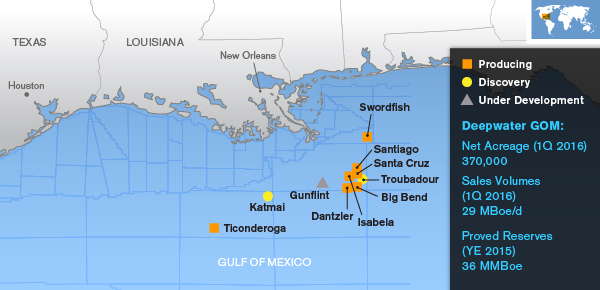
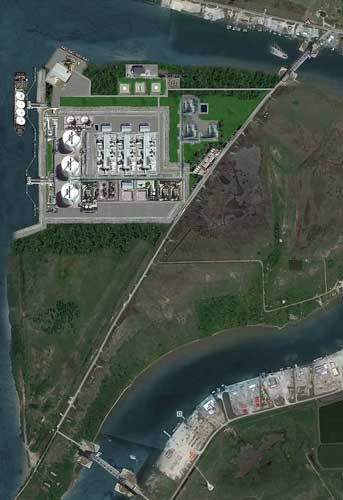 Image courtesy: SCT & E LNG
Image courtesy: SCT & E LNG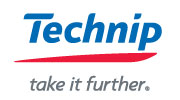 Technip
Technip The Bureau of Ocean Energy Management (BOEM) has notified companies holding oil and gas leases in federal waters that it is updating financial assurance and risk management requirements to ensure that U.S. taxpayers never have to pay for decommissioning and removing a company’s offshore production facilities.
The Bureau of Ocean Energy Management (BOEM) has notified companies holding oil and gas leases in federal waters that it is updating financial assurance and risk management requirements to ensure that U.S. taxpayers never have to pay for decommissioning and removing a company’s offshore production facilities.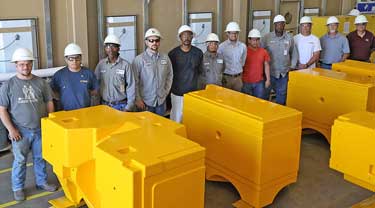 Forum Energy Technologies has expanded its Syntech specialist syntactic foam manufacturing capabilities with the opening of a facility in Bryan, Texas. Photo courtesy: Forum Energy Technologies
Forum Energy Technologies has expanded its Syntech specialist syntactic foam manufacturing capabilities with the opening of a facility in Bryan, Texas. Photo courtesy: Forum Energy Technologies
 Donald Young, CEO Hoover Container Solutions
Donald Young, CEO Hoover Container Solutions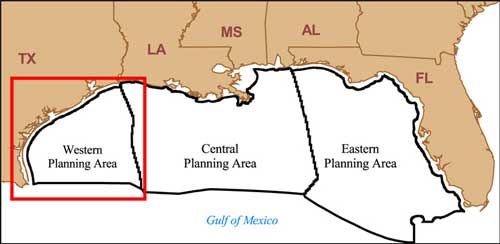
 Refinery Margins Soften and Focus Shifting from Gasoline to Distillate
Refinery Margins Soften and Focus Shifting from Gasoline to Distillate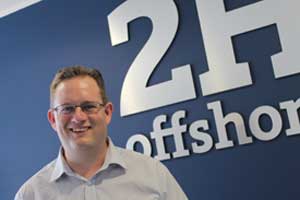 Yann Helle
Yann Helle BP
BP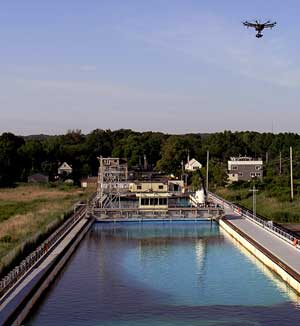 A rotorcraft, carrying visual and thermal infrared sensors, collects imagery of the oil on the Ohmsett tank. Photo courtesy: BSEE
A rotorcraft, carrying visual and thermal infrared sensors, collects imagery of the oil on the Ohmsett tank. Photo courtesy: BSEE Historically, Gazprom has monopolized all gas exports in Russia. Complete control over gas sales to both east and west did not incentivize Gazprom to explore new ventures in LNG projects. Instead, the company focused on the development of a conventional pipeline network – including the Nord Stream, South Stream and East Siberia-Pacific Ocean pipelines. Consequently – in terms of the LNG market – Russia is lagging behind other global gas producers, such as Australia or Qatar who have heavily invested in infrastructure over the past decade.
Historically, Gazprom has monopolized all gas exports in Russia. Complete control over gas sales to both east and west did not incentivize Gazprom to explore new ventures in LNG projects. Instead, the company focused on the development of a conventional pipeline network – including the Nord Stream, South Stream and East Siberia-Pacific Ocean pipelines. Consequently – in terms of the LNG market – Russia is lagging behind other global gas producers, such as Australia or Qatar who have heavily invested in infrastructure over the past decade.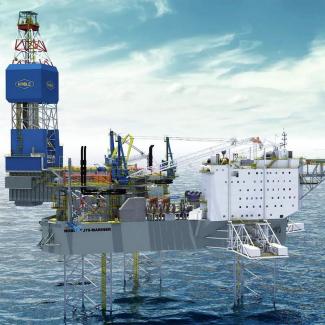 Image courtesy: Noble Corporation
Image courtesy: Noble Corporation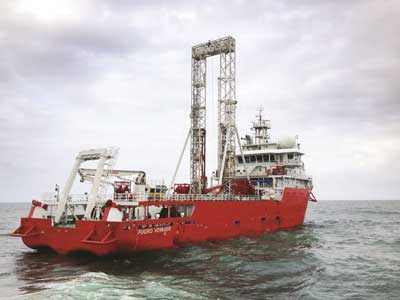 Fugro deploys deepwater geotechnical vessel, Fugro Voyager, for ONGC works offshore India’s east coast
Fugro deploys deepwater geotechnical vessel, Fugro Voyager, for ONGC works offshore India’s east coast